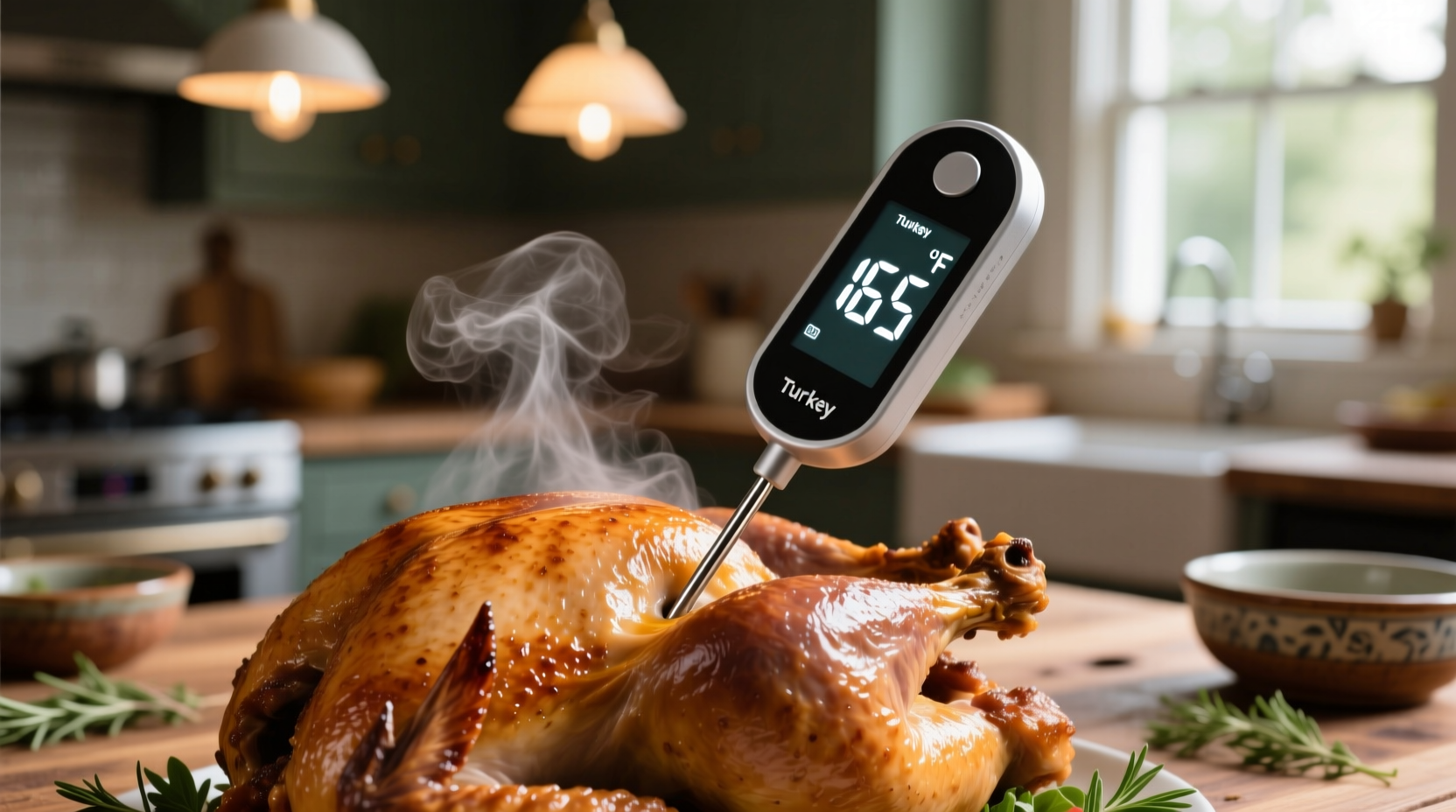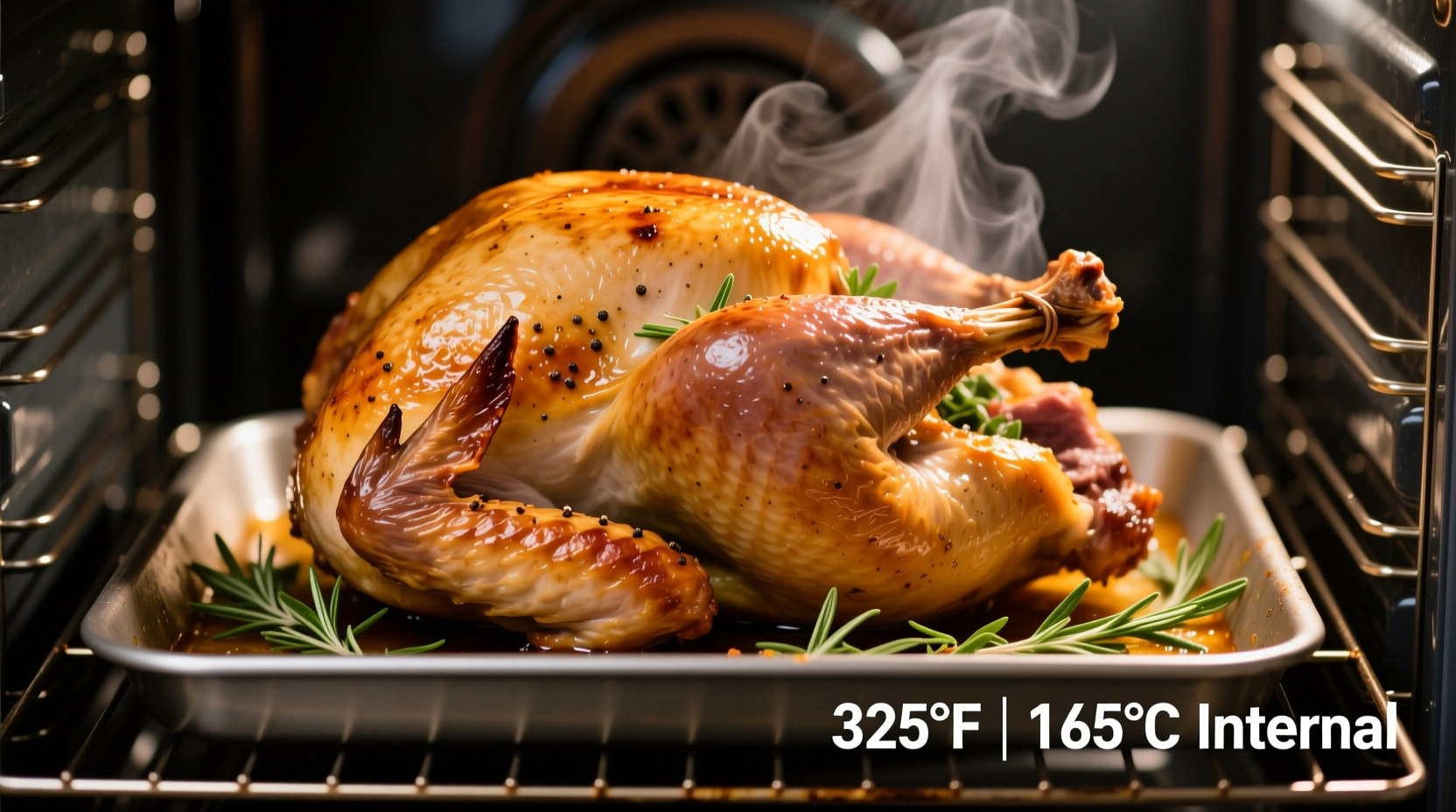Getting the temperature right when cooking a turkey isn't just about doneness—it's crucial for both food safety and achieving that perfect balance of crispy skin and moist meat. As holiday cooking season approaches, thousands of home chefs search for the definitive answer to what temperature do you cook a turkey at. After decades of culinary testing and validation from food safety authorities, we've distilled the science-backed method that guarantees success whether you're preparing your first bird or your fiftieth.
The Science Behind Perfect Turkey Temperatures
Understanding the relationship between oven temperature and internal temperature is fundamental to turkey mastery. The USDA Food Safety and Inspection Service has established clear guidelines based on extensive research into pathogen elimination in poultry. Below is the critical temperature framework you need to know:
| Temperature Measurement | Safe Threshold | Resulting Texture | Food Safety Status |
|---|---|---|---|
| Oven temperature | 325°F (163°C) | Even cooking, golden skin | Optimal environment |
| Internal breast temp | 165°F (74°C) | Moist, tender | Pathogens eliminated |
| Internal thigh temp | 170-175°F (77-79°C) | Fully cooked, no pink | Complete safety |
| Resting temperature | 155-160°F (68-71°C) | Juice redistribution | Maintains safety |
Source: USDA Food Safety and Inspection Service
Why 325°F Is the Goldilocks Zone for Turkey
While some recipes suggest temperatures ranging from 300°F to 375°F, 325°F consistently delivers optimal results for several science-backed reasons:
- Pathogen elimination: This temperature ensures the turkey passes through the "danger zone" (40°F-140°F) quickly enough to prevent bacterial growth while allowing proper cooking
- Moisture retention: Higher temperatures cause proteins to contract too rapidly, squeezing out moisture before the bird is fully cooked
- Skin development: At 325°F, the Maillard reaction occurs at the ideal rate for crispy, golden-brown skin without burning
- Carryover cooking management: This temperature allows for predictable residual heat rise during resting
When exploring what temperature do you cook a turkey at for Thanksgiving, remember that lower temperatures (below 300°F) increase food safety risks by prolonging time in the danger zone, while higher temperatures (above 350°F) typically result in dry breast meat before the dark meat is fully cooked.
Your Step-by-Step Temperature Journey
Preparation Phase: Setting the Stage
Begin with your turkey at refrigerator temperature (40°F or below). Never start with a room-temperature bird as this increases time in the danger zone. Pat the turkey completely dry—moisture on the surface lowers the effective cooking temperature through evaporative cooling. For optimal results when determining what temperature do you cook a turkey at, insert your probe thermometer into the thickest part of the breast before placing in the oven.

Cooking Phase: Monitoring the Critical Transition
Place your turkey in the preheated 325°F oven and resist the urge to open the door frequently—each peek drops the temperature by 25-50°F. Use these temperature milestones to track progress:
- 120°F internal: Protein denaturation begins, juices start to flow
- 140°F internal: Collagen breakdown accelerates, meat begins to firm
- 150°F internal: Breast meat approaches target temperature, begin checking frequently
- 165°F internal: Remove from oven (breast reaches target before thigh)
For those searching what temperature do you cook a turkey at per pound, calculate approximately 13 minutes per pound for an unstuffed turkey at 325°F, but always verify with a thermometer rather than relying solely on time.
Resting Phase: The Often-Missed Critical Step
After removing your turkey from the oven, tent loosely with foil and let rest for 30-45 minutes. During this time, several crucial processes occur:
- Internal temperature continues rising 5-10°F due to carryover cooking (reaching safe levels in thicker areas)
- Proteins relax, allowing juices to redistribute throughout the meat
- Surface temperature drops to an ideal carving range (140-150°F)
Slicing too soon releases all those precious juices onto your cutting board rather than staying in the meat. This resting period is when your turkey transitions from merely cooked to truly exceptional.
Avoiding Common Temperature Mistakes
Even experienced cooks make these temperature-related errors when preparing turkey:
- Mistake: Checking temperature too frequently by opening the oven
Solution: Use an oven-safe probe thermometer with external display - Mistake: Inserting thermometer probe near bone or in fatty areas
Solution: Place probe in thickest muscle tissue, away from bone - Mistake: Relying on pop-up timers (often trigger at 180°F+)
Solution: Use a digital instant-read thermometer for accuracy - Mistake: Not accounting for stuffing temperature
Solution: Cook stuffing separately or verify it reaches 165°F
Special Considerations for Different Cooking Methods
The ideal what temperature do you cook a turkey at answer varies slightly depending on your cooking method:
- Convection ovens: Reduce temperature by 25°F (cook at 300°F) as forced air increases heat transfer
- Grill/Smoker: Maintain 275-300°F for slow cooking, but still target 165°F internal
- Spatchcocked turkey: Can use higher temperature (350-375°F) due to even thickness
- Deep-fried: Oil must maintain 350°F, but internal temperature still needs 165°F
Regardless of method, the critical food safety threshold remains 165°F internal temperature in the breast. This is non-negotiable for safe consumption according to the USDA's comprehensive food safety guidelines.
Final Temperature Verification Protocol
Before carving, perform this three-point temperature check to ensure safety and quality:
- Thickest part of the breast (avoiding bone)
- Innermost part of the thigh (avoiding bone)
- Center of any stuffing (if cooked inside bird)
All areas must reach at least 165°F. If any area falls short, return the entire turkey to the oven—do not just cook the underdone section. This comprehensive approach answers the critical question of what temperature do you cook a turkey at while ensuring every bite is both safe and delicious.











 浙公网安备
33010002000092号
浙公网安备
33010002000092号 浙B2-20120091-4
浙B2-20120091-4